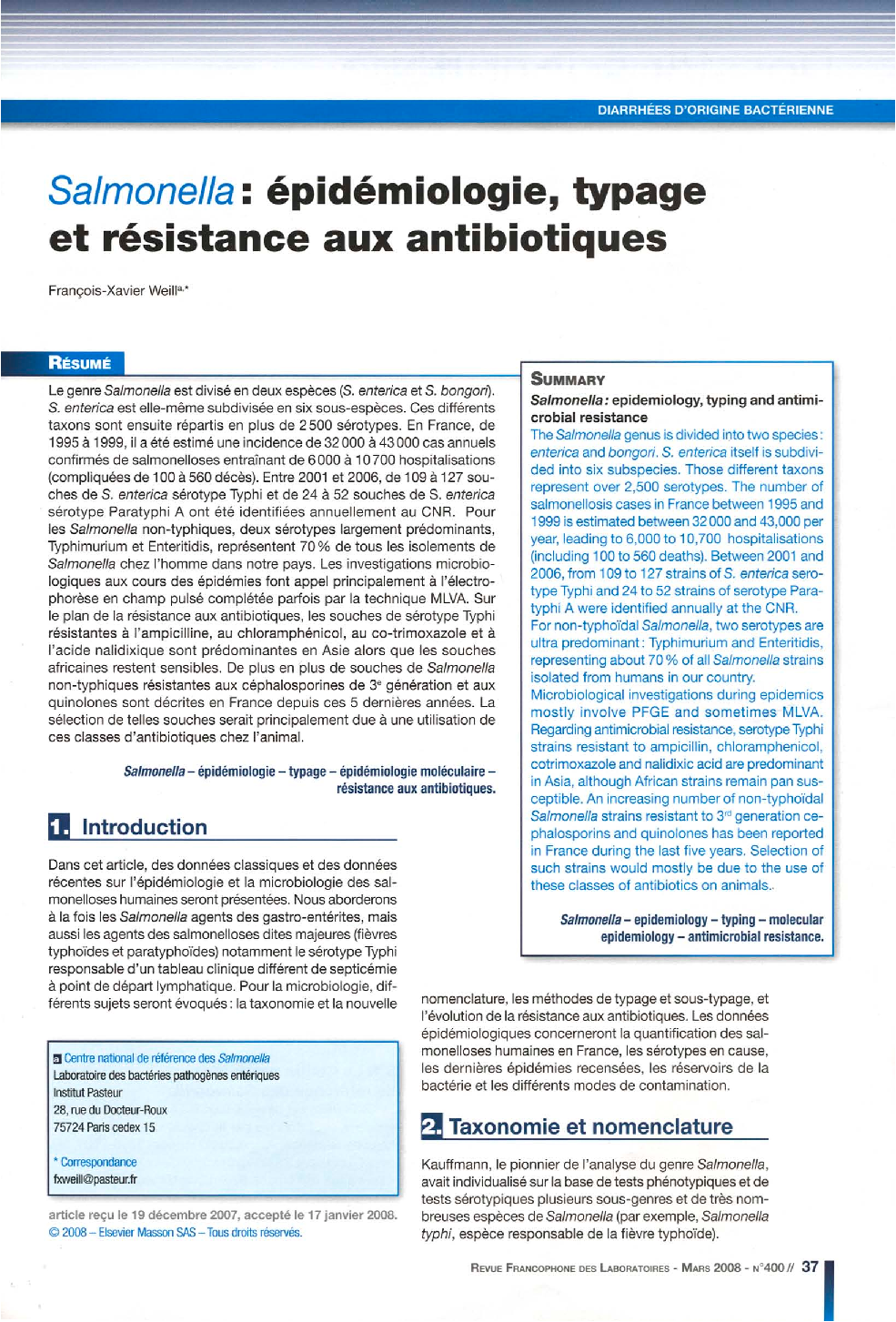| Article ID | Journal | Published Year | Pages | File Type |
|---|---|---|---|---|
| 7663658 | Revue Francophone des Laboratoires | 2008 | 11 Pages |
Abstract
The Salmonella genus is divided into two species enterica and bongori. S. enterica itself is subdivided into six subspecies. Those different taxons represent over 2,500 serotypes. The number of salmonellosis cases in France between 1995 and 1999 is estimated between 32 000 and 43,000 per year, leading to 6,000 to 10,700 hospitalisations (including 100 to 560 deaths). Between 2001 and 2006, from 109 to 127 strains of S. enterica serotype Typhi and 24 to 52 strains of serotype Paratyphi A were identified annually at the CNR. For non-typhoïdal Salmonella, two serotypes are ultra predominant: Typhimurium and Enteritidis, representing about 70 % of all Salmonella strains isolated from humans in our country. Microbiological investigations during epidemics mostly involve PFGE and sometimes MLVA. Regarding antimicrobial resistance, serotypeTyphi strains resistant to ampicillin, chloramphenicol, cotrimoxazole and naliclixic acid are predominant in Asia, although African strains remain pan susceptible. An increasing number of non-typhoidal Salmonella strains resistant to 3rd generation cephalosporins and quinolones has beer reported in France during the last five years. Selection of such strains would mostly be due to the use of these classes of antibiotics on animals.
Keywords
Related Topics
Physical Sciences and Engineering
Chemistry
Analytical Chemistry
Authors
François-Xavier WeiIl,
